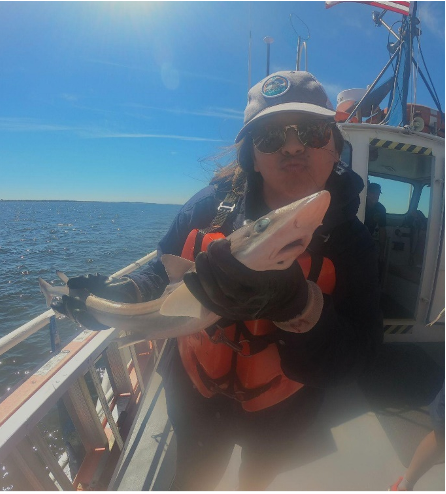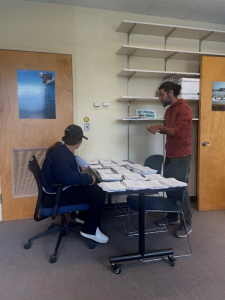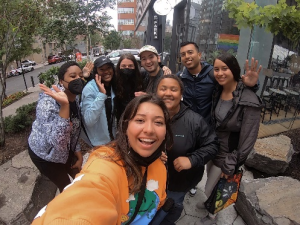“Boricua” studies Seafood by the Seashore : The first-ever national seafood survey
Written by Charlene Pérez Santos, OneHealth REU program 2022 participant

From the small tropical island in the Caribbean called Puerto Rico, rising senior from the University of P.R. in Humacao, Charlene Pérez Santos, gets accepted as the first Puerto Rican in the NOAA IN-FISH Internship program where she takes part working on the first-ever “American Seafood Harvesters Marketing Practices Survey”. This project involves a unique partnership with NOAA Fisheries, the U.S. Department of Agriculture and the University of Maine.
Inspired by her island, Charlene took an interest in marine life where she now majors in Marine Biology with a minor in wildlife management. Even though her research interests are marine mammal conservation & management, the NOAA IN-FISH Internship caught her attention because of its inclusivity in engaging research and management projects. Additionally, Charlene is also involved in the Accelerating New Environmental Workskills (ANEW) REU program taking place at the University of Maine through her participation in professional development workshops that aim to develop critical research and thinking skills for interdisciplinary problems including animal and environmental health.

“During these first few weeks, I’ve been able to develop skills that help me be more prepared in the marine science workspace. I get to be part of the ‘behind the scenes’ turning point for all fishermen. ” says Charlene.
Direct seafood marketing involves seafood sales that directly benefit fishers and are traceable back to them. For example: fishermen selling seafood off boats/docks, through community supported fisheries, direct sales to restaurants and fishmongers, etc. However, little information is known about the number of businesses, geography, or total value of local and direct seafood sales. Because of this gap, fishing industries, policymakers and researchers have the difficult task of justifying investments in this sector, providing technical support to strengthen the sector and even identifying impacts of new regulations or climate change. These data help inform what’s really happening out there with direct seafood marketing in the community.
“And this is what it really is about. As my mentor says, it is about getting the size of the US direct seafood sector right.” says Charlene
These programs have given Charlene the opportunity to do networking. Mentors and advisors like Dr. Joshua Stoll and Dr. Sahir Advani, leading scientists working on this project, have helped her have a better understanding of the fishing industry as a complex system. Also, coordinators and advisors from the IN-FISH program like Dr. Kaja Brix and Dr. Sean Lucey have made her feel welcomed by helping her with her future plans on going to graduate school.

“I’m so grateful and honored for the opportunity of being here. The first two weeks in New Jersey I developed great friendships and was able to discover New York City, an unforgettable adventure! Also, my experience in Maine has been enriching! The landscape and natural life reminds me of why I’m a marine biologist. Being from Puerto Rico makes this experience more valuable. Also, to represent my community as the first Puerto Rican to join the program has made me be proud of my roots and be as engaged as I can be.” says Charlene
For more information about the American Seafood Harvesters Marketing Practices Survey visit: https://umaine.edu/marine/seafood-marketing-survey/
